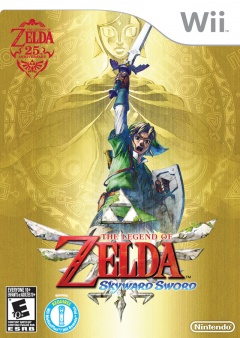slow text
The Legend of Zelda: Skyward Sword
 The lasting impression from my recent introduction to the original
Legend of Zelda was its unstructured progression. With only a ghost of a
narrative driving the action and few barriers to limit wanderlust, the
course of my trip through Hyrule was almost entirely up to me. Having played Ocarina of
Time before any other Zelda game, I was surprised to see just how
hands-off the original was.
The lasting impression from my recent introduction to the original
Legend of Zelda was its unstructured progression. With only a ghost of a
narrative driving the action and few barriers to limit wanderlust, the
course of my trip through Hyrule was almost entirely up to me. Having played Ocarina of
Time before any other Zelda game, I was surprised to see just how
hands-off the original was.
In contrast, last month's Skyward Sword may be the most linear Zelda experience yet. The newest quest sees Link flying from one compact landmass to the next with hardly any room for side trips. The vast sky of islands is sparser than Wind Waker's nearly endless ocean, and even the surface world below is but three masses of land separated by impenetrable mountain ranges and deserts and forests. This is a Zelda where the path to the next waypoint is often the only path.
Every game in the series since the eighties original has trended towards structure and direction as story progression and ability acquisition gained a greater share of the Zelda spirit. Aesthetic similarities and recurring tropes aside, The Legend of Zelda and Skyward Sword could be mistaken for two wholly separate franchises. For better or worse, Skyward Sword feels like the end state of a slow evolution that Nintendo has been cooking for twenty-five years.
